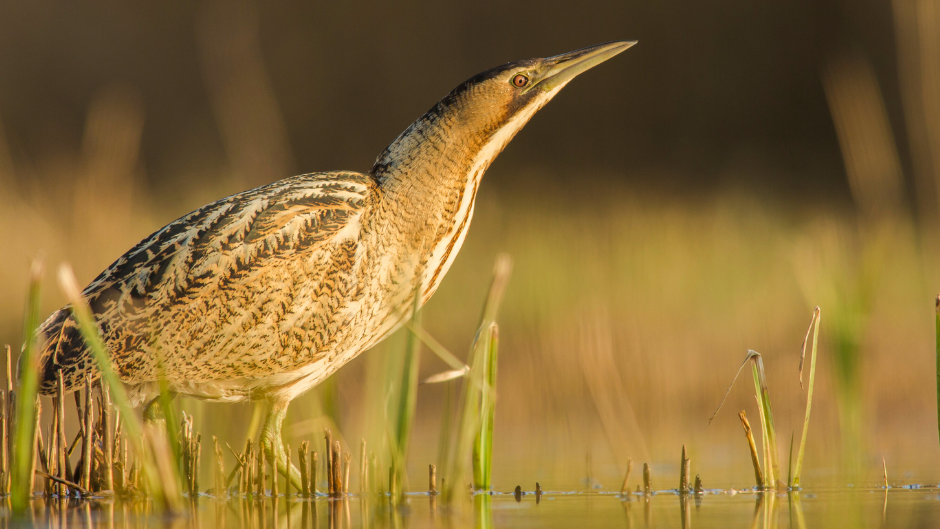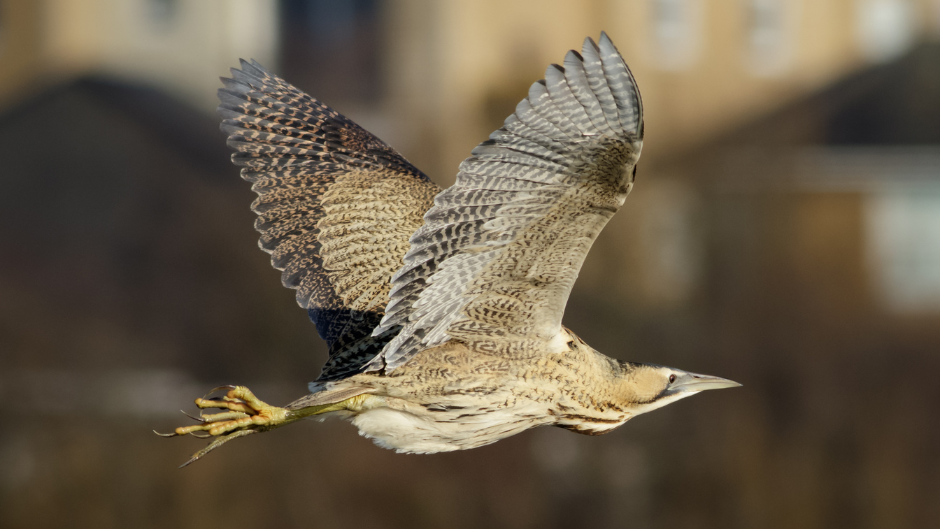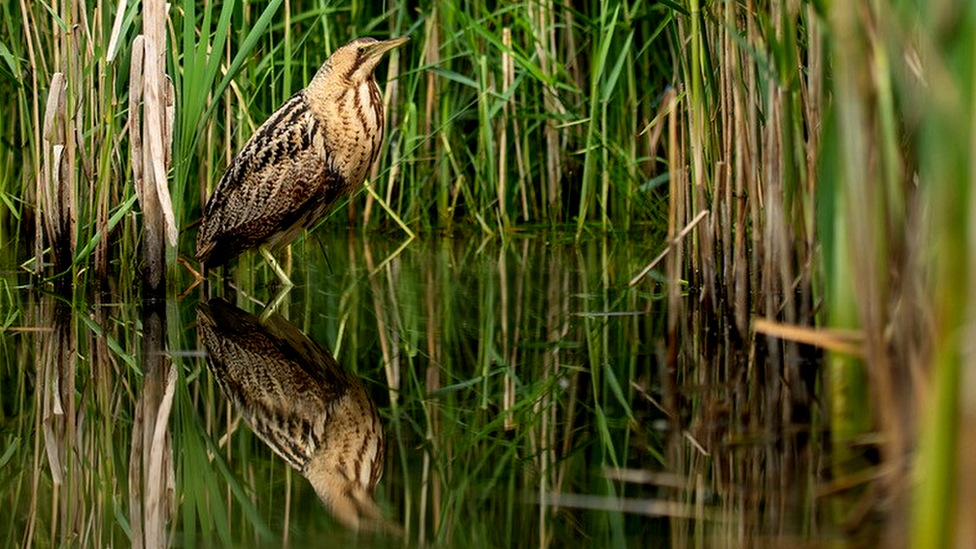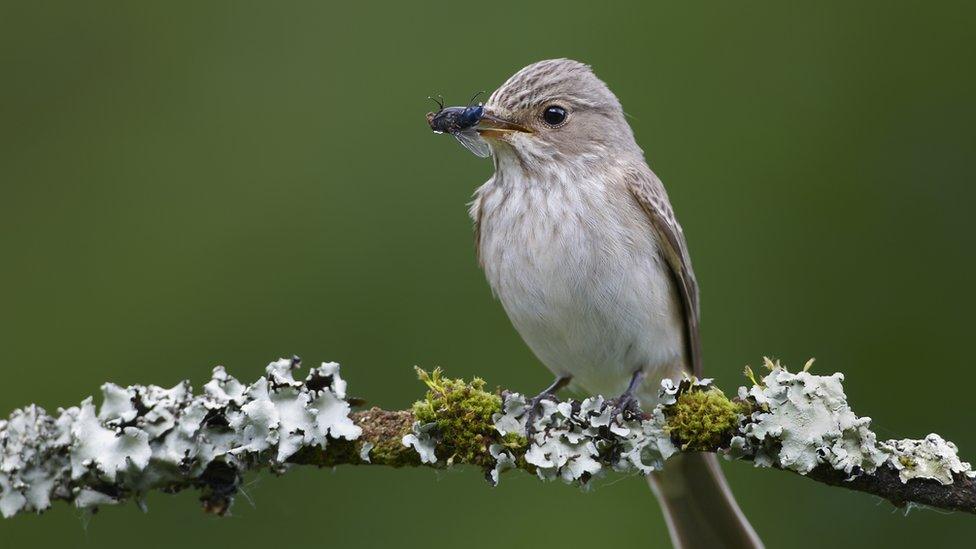Listen out for UK's loudest bird – conservationists

Bitterns spend almost all of their time in reedbeds, where they feed on fish.
- Published
People are being asked to listen out for the "foghorn-like" call of a rare type of heron as part of a citizen science project.
Somerset Wildlife Trust (SWT) is looking to monitor the county's bittern population with a month-long survey from 14 March to 14 April.
The pale brown birds were once near extinct in the UK but are making a steady comeback due to conservation efforts.
SWT said the number of bitterns identified on the Somerset Levels had risen over the last decade, with between 40 and 50 males now regularly being counted across its sites.
The distinctive booming sound of a male bittern’s call during the spring breeding season is the loudest call of any UK bird and can be heard up to two miles (3.2km) away.
However, they are often hard to spot due to their effective camouflage.

The pale brown herons were once almost extinct in the UK but are now making a steady comeback due to conservation efforts
Mark Blake, SWT's senior reserves manager, said anyone who hears the sound in Somerset over the next month can log it online as part of Project Bittern, external.
"We're hoping it's going to be really straightforward and we're really keen to get as many people as possible around the county involved," he told BBC Radio Somerset.
Bitterns were pushed to the brink of extinction in the county twice – in the 1870s and 1990s – when their reedbed homes were drained for agriculture and peat extraction.
Conservation work has helped numbers recover, with 228 males counted across the UK in 2022, according to the RSPB.
Allow X content?
This article contains content provided by X. We ask for your permission before anything is loaded, as they may be using cookies and other technologies. You may want to read X’s cookie policy, external and privacy policy, external before accepting. To view this content choose ‘accept and continue’.
SWT said the Avalon Marshes on the Levels boast one of the biggest populations of bitterns in the UK, with regular sightings at Ham Wall, Shapwick Heath and Westhay Moor.
Bitterns spend almost all of their time in reedbeds, where they feed on fish.
Their pale brown plumage, streaked with beige and black markings, help them blend in to their surroundings.
They are currently on the amber list for UK conservation status.
Related topics
- Published25 March 2022

- Published13 February 2024
